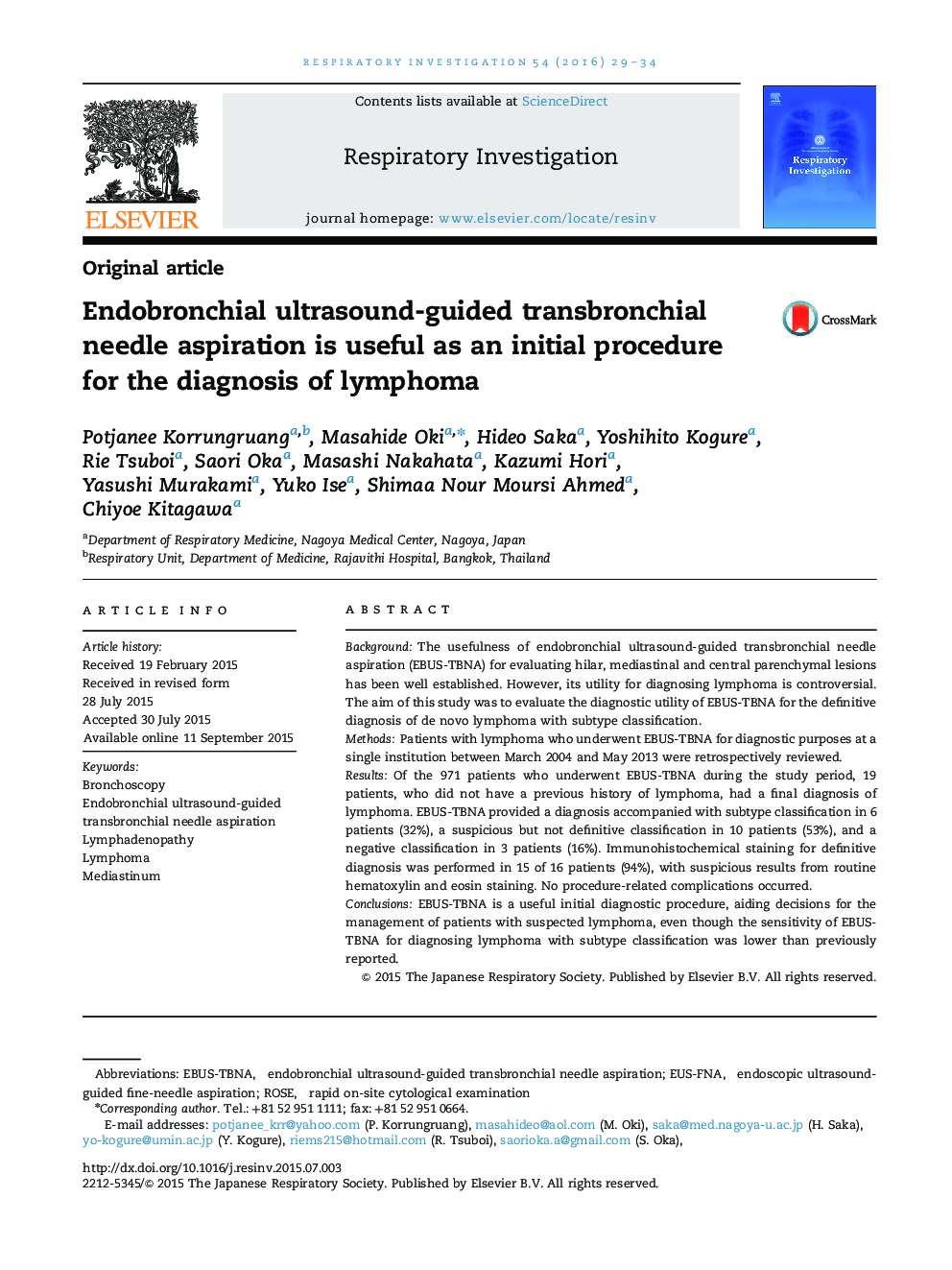| Article ID | Journal | Published Year | Pages | File Type |
|---|---|---|---|---|
| 3418626 | Respiratory Investigation | 2016 | 6 Pages |
BackgroundThe usefulness of endobronchial ultrasound-guided transbronchial needle aspiration (EBUS-TBNA) for evaluating hilar, mediastinal and central parenchymal lesions has been well established. However, its utility for diagnosing lymphoma is controversial. The aim of this study was to evaluate the diagnostic utility of EBUS-TBNA for the definitive diagnosis of de novo lymphoma with subtype classification.MethodsPatients with lymphoma who underwent EBUS-TBNA for diagnostic purposes at a single institution between March 2004 and May 2013 were retrospectively reviewed.ResultsOf the 971 patients who underwent EBUS-TBNA during the study period, 19 patients, who did not have a previous history of lymphoma, had a final diagnosis of lymphoma. EBUS-TBNA provided a diagnosis accompanied with subtype classification in 6 patients (32%), a suspicious but not definitive classification in 10 patients (53%), and a negative classification in 3 patients (16%). Immunohistochemical staining for definitive diagnosis was performed in 15 of 16 patients (94%), with suspicious results from routine hematoxylin and eosin staining. No procedure-related complications occurred.ConclusionsEBUS-TBNA is a useful initial diagnostic procedure, aiding decisions for the management of patients with suspected lymphoma, even though the sensitivity of EBUS-TBNA for diagnosing lymphoma with subtype classification was lower than previously reported.
